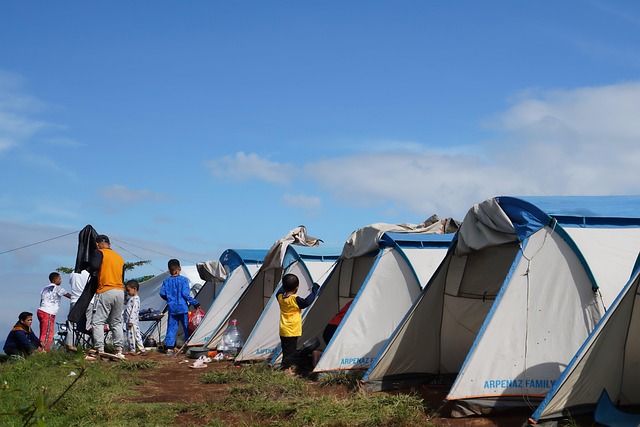How to Find Emergency Rent Support Near You
If you face a sudden housing crisis, knowing where to look for emergency rent support can reduce immediate stress and protect your tenancy. This article outlines practical steps to locate rental relief, understand eligibility, apply for assistance, and connect with local services that help prevent eviction and homelessness.

If you are dealing with an urgent housing need, taking a structured approach helps you find rent relief and maintain stability. Start by gathering basic documents (ID, lease, proof of income, eviction notices) and list your immediate needs: short-term rental assistance, rehousing, shelter, or eviction prevention. Knowing what you need will speed referrals from local services and improve the quality of your application for subsidies, grants, or benefits.
How can I find local rent relief programs?
Search for local services such as community action agencies, your city or county housing department, or a local public housing authority. Many municipalities maintain emergency rental assistance programs or can refer you to nonprofit organizations that administer grants and subsidies. Use centralized helplines (for example, a 2-1-1 service where available) or the website of your regional housing authority to identify programs in your area. Document program names and eligibility windows, as funding rounds can change and some programs operate on a first-come, first-served basis.
What counts as rental subsidy, grant, or relief benefits?
Rental subsidy typically refers to ongoing assistance that reduces monthly rent, while a grant or one-time relief payment covers arrears or a short-term need. Benefits may include direct payments to landlords, vouchers, case management, or referrals to rehousing services. Each program defines what expenses qualify—past-due rent, upcoming rent, utilities, or moving costs—so read guidance carefully. Programs funded through government sources often prioritize households facing imminent eviction, those with very low income, or families with children or medical vulnerabilities.
Who is eligible and how is eligibility determined?
Eligibility depends on program rules: income limits (often a percentage of area median income), documentation of financial hardship, proof of tenancy, and local residency requirements. Some programs require evidence that a COVID-related or other emergency caused the loss of income, while others use broader hardship standards. Be prepared to provide pay stubs, benefit letters, eviction notices, a signed lease, and identification. If you’re unsure, speak with a caseworker at a local housing office or nonprofit to confirm which documents are essential for an application.
How do I apply and communicate with my landlord?
Start applications as early as possible and keep copies of everything you send. Many assistance programs allow online, email, or mailed applications; some require in-person visits. When asking your landlord to accept payment directly from a program, provide clear authorization forms if required. Maintain written communication about your situation—copies of messages, notices, or agreements help establish timelines in case of eviction proceedings. If your landlord is cooperative, they may accept a payment plan or agree to defer eviction while assistance is processed.
How to avoid eviction and find shelter or rehousing?
If eviction is imminent, contact legal aid organizations to learn about tenant rights in your jurisdiction and whether moratoriums or court diversion programs apply. Local shelters, transitional housing, and rehousing services can offer immediate safety if you lose housing; these resources often coordinate with rental relief programs for short- or long-term solutions. Prioritize shelters or rehousing programs that provide case management so you can access benefits, employment supports, and subsidy programs that improve stability.
| Provider Name | Services Offered | Key Features/Benefits |
|---|---|---|
| HUD (U.S. Department of Housing and Urban Development) | Information on federal housing programs, links to local offices | Central resource for federal rental assistance guidance and housing policy |
| Local Public Housing Authority (PHA) | Vouchers, program referrals, housing lists | Administers area-specific rental subsidy programs and tenant services |
| United Way (local chapters) | Emergency funds, referral to nonprofits, 2-1-1 helpline | Centralized referral network and case coordination in many areas |
| Salvation Army | Emergency rent assistance, case management | Local offices often provide short-term relief and support services |
| Catholic Charities | Emergency aid, rehousing support, counseling | Community-based assistance with access to local aid programs |
| Community Action Agencies | Rent/utility assistance, employment support | Focus on low-income households with wraparound services |
| 2-1-1 Helpline | Referral to housing, food, health, and financial services | One-call connection to local agencies and current program availability |
Prices, rates, or cost estimates mentioned in this article are based on the latest available information but may change over time. Independent research is advised before making financial decisions.
How to track applications and follow up effectively
After applying, keep a simple tracker with submission dates, contact names, reference numbers, and required follow-up steps. Note whether programs pay landlords directly or issue tenant payments. If processing is delayed, politely follow up using documented contact methods; many agencies prioritize cases with eviction filings. Keep copies of any court notices and share them with the agency handling your application—proof of imminent eviction often affects prioritization.
This overview describes common options and steps for locating emergency rent support in your area, how to apply, and how to coordinate with landlords and local providers. Local program details vary, so verify eligibility, documentation, and deadlines with the agencies you contact to find the most appropriate resources for your circumstances.





